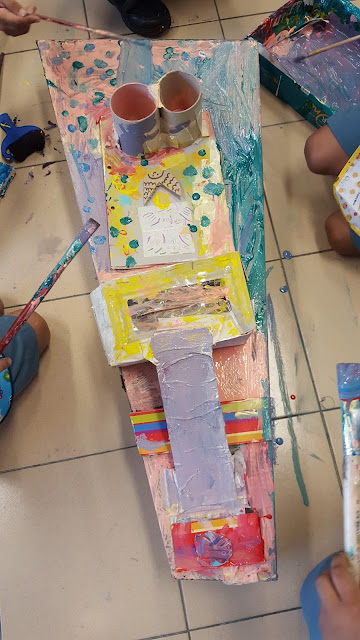The students' task for our current unit was to create awareness about their new knowledge using air-dry clay and painting the background. The children worked in 7 groups of 6. To cut down on washing time, I have the poster paint and cardboard palettes out for them to take whatever they need. So they will throw away the cardboard palettes and only wash the paintbrushes.
As the children start working, I will walk around and facilitate. By facilitating, sometimes I like asking children "what are you doing?" to ensure that they begin with an end in mind. Some children were more proactive than others so I would get them to organise the team in teams of individual contribution.
They were shown a photo compilation so that besides learning from each other in their own class, they will also be able to see what other classes were doing. I think they also feel comfortable seeing me going around taking photos as they know their identities will not be revealed but rather I emphasize on learning good practices from others. Be it painting techniques, concepts or written reflection.
As the children start working, I will walk around and facilitate. By facilitating, sometimes I like asking children "what are you doing?" to ensure that they begin with an end in mind. Some children were more proactive than others so I would get them to organise the team in teams of individual contribution.
They were shown a photo compilation so that besides learning from each other in their own class, they will also be able to see what other classes were doing. I think they also feel comfortable seeing me going around taking photos as they know their identities will not be revealed but rather I emphasize on learning good practices from others. Be it painting techniques, concepts or written reflection.




































